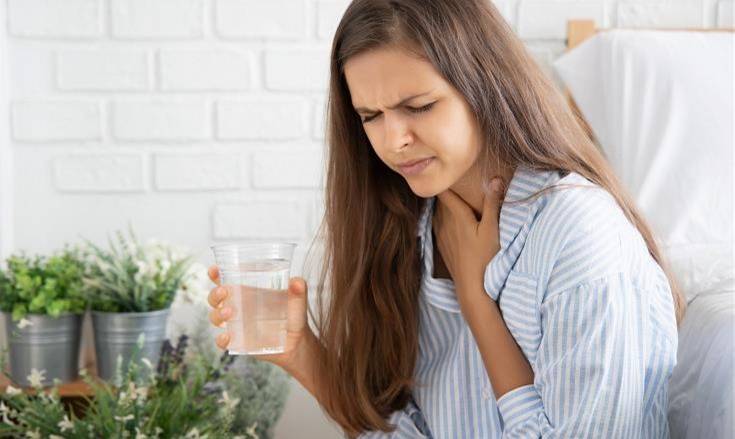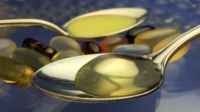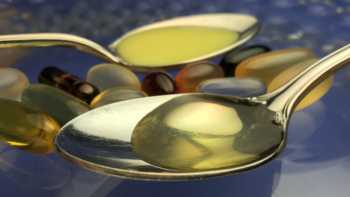
Answer:
Some people are particularly prone to pills getting "stuck" in their throat (known medically as pill-induced esophagitis) (Kikendall, Dig Dis Sci 1983). This includes people who produce less saliva (which can occur with age, medical conditions such as scleroderma, or due to medications), those who have esophageal narrowing, and those who have difficulty swallowing (which can be caused by conditions including iron deficiency and calcium deficiency).
In most cases the pill only causes some discomfort and eventually goes down, but there are cases where a pill gets permanently stuck and begins to open, causing irritation, inflammation, and even perforation of the esophagus with serious consequences, as in the recent case of esophageal perforation due to a bone health supplement (Zijlstra, Case Rep Gastroenterol 2022).
Be aware that, in addition to pills lodging in the esophagus, pills can also be choking hazards if they block routes to the lungs, and pills (particularly iron pills) that make their way into the lungs can cause great damage.
Here are seven tips to avoid getting pills stuck in your throat:
1. Drink fluid
Drink water or another beverage (at least 200-250 mL or about 1 cup) when taking the pill (Saleem, StatPearls 2022).
There is some evidence, at least in older people, that it may be best for the water or beverage to be colder (less than 68 F) or warmer (105 to 140 F) than body temperature, as this may help to stimulate the swallowing reflex (Ebihara, J Pharmacol Sci 2011; Watando, J Am Geriatr Soc 2004).
2. Take one pill at a time
If you need to take more than one pill, be sure you’ve completely swallowed each pill with fluid (such as a cup of water), before taking another. This is because pills can potentially stick together, causing a blockage. This is of particular concern with larger pills, those with coatings, and those that contain hydrogels (Kupferman, ACG Case Rep J 2023 Jul).
3. Be upright
Be upright when taking the pill so that gravity can help move it down. It should normally go down within 90 seconds, but it is recommended to be upright for at least 30 minutes.
In general, it is recommended that the head also be in an upright, neutral position with no rotating or bending while swallowing.
Tilting the head back is generally not recommended as it may increase choking risk.
The following two approaches have also been suggested (Forough, Patient Prefer Adherence 2018 -- see illustrations here); however, people with swallowing difficulty due to muscle or nerve damage (as may occur with Parkinson's disease, multiple sclerosis, after a stroke, etc.) should consult with their physician before attempting these:
- An alternative with which many ConsumerLab members have reported success, is to put the pill in the mouth with a viscous liquid or slurry food (e.g., a sip of milk, yogurt, or thick drink, like Ensure, or tablespoon of apple sauce) and then swallow this combination, followed by water or other beverage. Some also drink water or other beverage before taking the pill (as well as afterward).
- Place pill on tongue and take a sip of water, bend head forward and then tuck chin down towards the chest, then swallow the pill and water. However, in people with trouble swallowing, this technique prolonged the time for the pill to enter the esophagus and did not improve protection of the airway (Forbes, Am J Speech Lang Pathol 2021).
- Place the pill on the tongue and close your lips tightly around a straw or spout of a flexible bottle and suck water into the mouth. Then swallow the pill and water together.
4. Don’t take at bedtime
Don't take the pill right before lying down or going to bed. However, if you must lie down right after taking a pill, lie on your right side or your back. Because the stomach curves from left to right, gravity hinders the pill from reaching the intestine if you are on your left side (Lee, Phys Fluids 2022).
5. Eat a meal afterward
If permissible, eat a snack or a meal to help move the pill down. This will also improve the absorption of some supplements.
6. Choose a non-pill formulation
Consider chewable, liquids, or effervescent tablets instead of capsules, softgels, regular tablets or caplets. Gummies can also be considered in some situations, as can crushing tablets. If you must take a pill, be aware that sustained-release formulations may cause more injury, if stuck, than immediate release-formulations (Kikendall, Dig Dis Sci 1983).
7. Choose a smaller pill
The larger the pill, the more likely it is to get stuck (which is why we measure and show pill sizes in all of our product reviews on ConsumerLab.com). The FDA suggests that pills be no more than 17 millimeters long. To reduce pill size, consider, instead, taking more pills of lower strength (such as two 250 mg calcium pills rather than a single 500 mg pill).
You can also reduce pill size with ingredients that are more concentrated, such as an herbal extract rather than an herb powder, or a marine oil that provides more EPA and DHA per volume due to less non-omega-3 oils, which we show in our fish oil review (look for pills we've labeled "very" or "extremely" high concentration).
An exception to this is that you may want to avoid pills with strongly acidic or basic contents, as they are more likely to cause a chemical burn if they get stuck. For example, apple cider vinegar pills can be very acidic (you are better off drinking dilute apple cider vinegar than taking a pill, anyhow). Ascorbic acid (vitamin C) and alpha lipoic acid are also somewhat acidic (and can also cause gastric (stomach) irritation due to this acidity). Some ingredients, such as potassium chloride, can also injure the esophageal lining by pulling water away from the esophagus (a hyperosmolar effect) if stuck to it (Hey, Br Med J (Clin Res Ed) 1982).
Join today to unlock all member benefits including full access to all CL Answers and over 1,400 reviews.
Join NowAlready a member? Sign In Here.
Join now at www.consumerlab.com/join/











Submit your comment
This feature is restricted to active members.
Join now to add comments and get all member benefits, including over 1,400 reviews.
Join NowAlready a member? Sign in here.